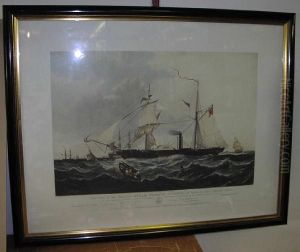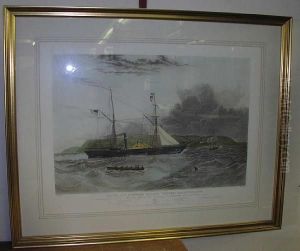William Augustus Knell Paintings
William Augustus Knell was a 19th-century British maritime painter, recognized for his skill in capturing the beauty and majesty of the sea. Born in 1801, he developed a fascination with naval scenes and seascapes, which became the central theme of his artistic career. His work often depicted British naval vessels and merchant ships, reflecting the power and significance of the British Empire's maritime prowess during the period.
Knell received training in the arts, though the specifics of his education remain less documented compared to some of his contemporaries. He was active during a time when the demand for maritime paintings was high, fueled by the naval victories of the British Empire and the romanticization of life at sea. This genre of painting was not only popular among the affluent classes but also among merchants and naval officers who desired to see their ships immortalized on canvas.
Throughout his career, Knell exhibited at prestigious institutions such as the British Institution and the Royal Academy in London, indicating a level of recognition and acceptance within the art community of the time. His paintings were well-regarded for their attention to detail, accuracy in the depiction of various types of vessels, and the ability to convey the atmosphere of the sea.
While Knell's work was primarily focused on maritime subjects, he also painted coastal and harbor scenes, showcasing daily life and the interaction between humans and the sea. His paintings often featured dynamic skies and the play of light on water, capturing the ever-changing moods of the ocean.
William Augustus Knell's contribution to British maritime art continued the tradition of artists like J.M.W. Turner and preceded that of later marine painters, contributing to a rich legacy of British seafaring art. He passed away in 1871, but his works continue to be appreciated by collectors and enthusiasts of maritime history and art.

